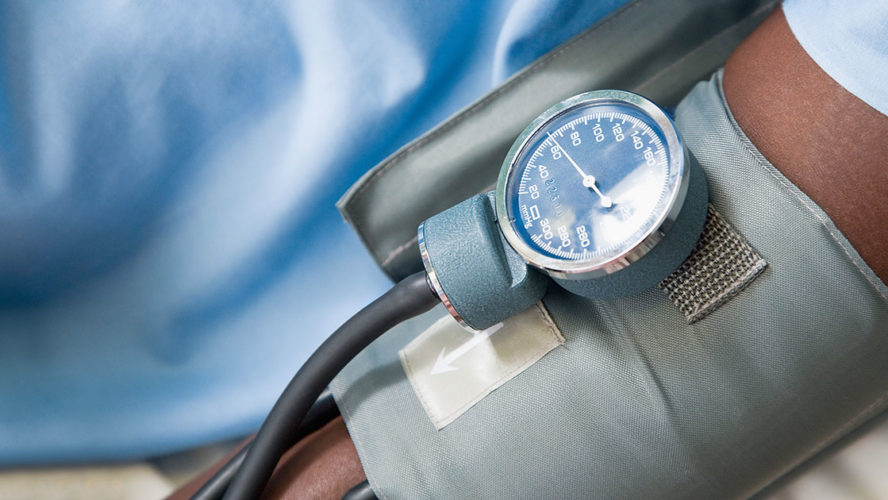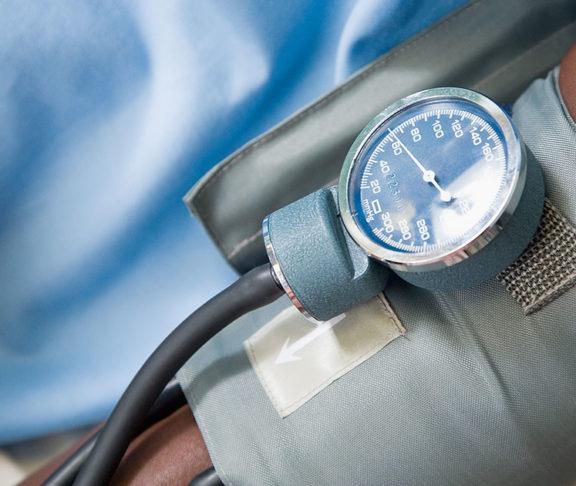One August night in 2011, Richard Horton woke up feeling strange. As he got up and stumbled across the room, he walked into a wall. He thought he might be having a stroke, but he quickly brushed it off and went back to bed.
Unbeknownst to Horton, a health insurance broker, years of uncontrolled high blood pressure had wreaked havoc on his blood vessels, causing a hemorrhagic stroke (i.e., a weakened blood vessel had ruptured). While recovering in the hospital, he suffered another stroke. Fully-paralyzed, Horton had to learn how to walk and talk again.
High blood pressure
A healthy blood pressure is less than 120/80. The higher a person’s blood pressure is, the more forcefully blood is pumping through the blood vessels. As the workload increases, the force and friction of high blood pressure damages the delicate tissues inside the arteries.
Over time and left untreated, high blood pressure can lead to life-threatening problems, including heart attack and stroke. People with hypertension also have an increased risk of serious complications and even death from COVID-19.
Nearly half of U.S. adults have high blood pressure, but the burden of disease is disproportionately higher in Black people, who have among the highest rates of hypertension in the world. Additionally, high blood pressure develops earlier in life and is usually more severe in this community.
While lifestyle factors, such as smoking, physical inactivity, and an unhealthy, high-sodium diet, increase the risk of high blood pressure, the American Heart Association (AHA) recognizes that Black people and other people of color face structural racism that contributes to inequities in access, use, and quality of healthcare.
Removing barriers
The AHA has made a commitment to eliminate uncontrolled high blood pressure, focusing on identifying and removing these health barriers.
Aimed specifically at reducing hypertension as a health disparity in Los Angeles County’s African American community, the AHA and Providence have collaborated to enable community organizations, faith-based groups, and workplace settings to teach members how to self-monitor and manage their blood pressure, and how to seek medical care. The effort is complemented by weekly online health lessons through the spring of 2022 where people learn simple steps to keep their blood pressure healthy and prevent cardiovascular disease.
The AHA is also working with outpatient clinics, including Federally Qualified Health Centers, and equipping them with the tools and resources to empower more than 900,000 patients in L.A.’s under-resourced communities to self-measure and manage their blood pressure. This includes providing complementary self-monitoring blood pressure cuffs to patients, and giving clinicians access to evidence-based strategies from the AHA’s Target: BP initiative, which informs the way healthcare teams assess and categorize levels of blood pressure, determine cardiovascular disease risk, and guide hypertension management.
The lack of diverse representation in the medical field is another crucial factor that needs to be addressed. That is why the AHA established the Historically Black Colleges and Universities Scholars Program to increase the number of Black students who apply and are accepted into graduate science, research, and public health programs.
Every person deserves the opportunity for a full, healthy life, and the American Heart Association believes that heart and brain health for all cannot be achieved without addressing uncontrolled high blood pressure and the structural inequities that make healthy choices difficult for many.
Go to heart.org/losangeles to learn more and get involved.

